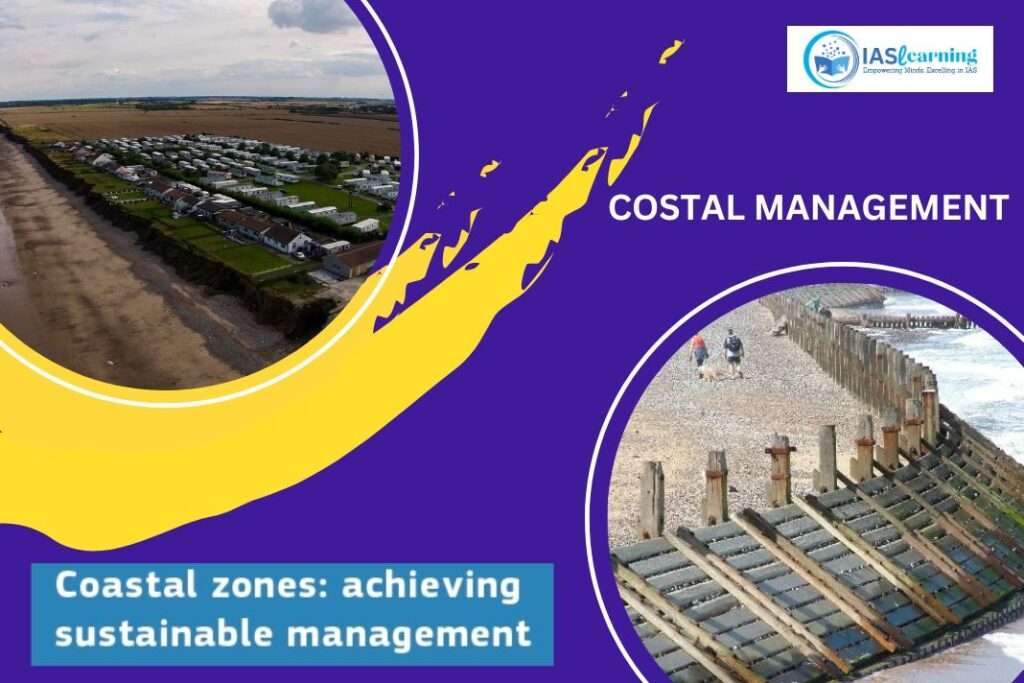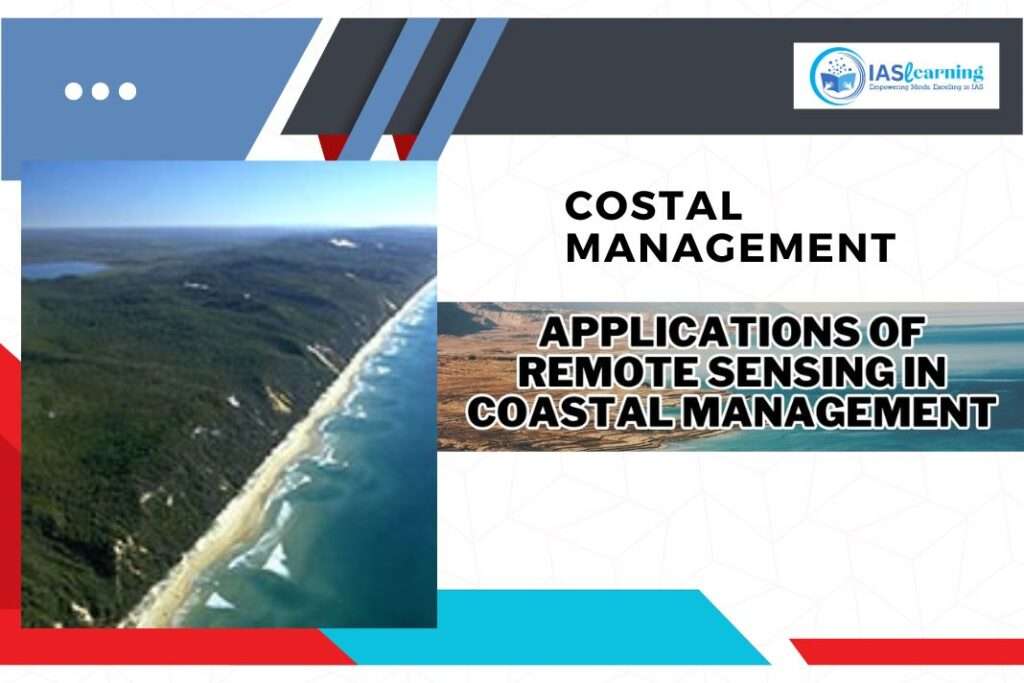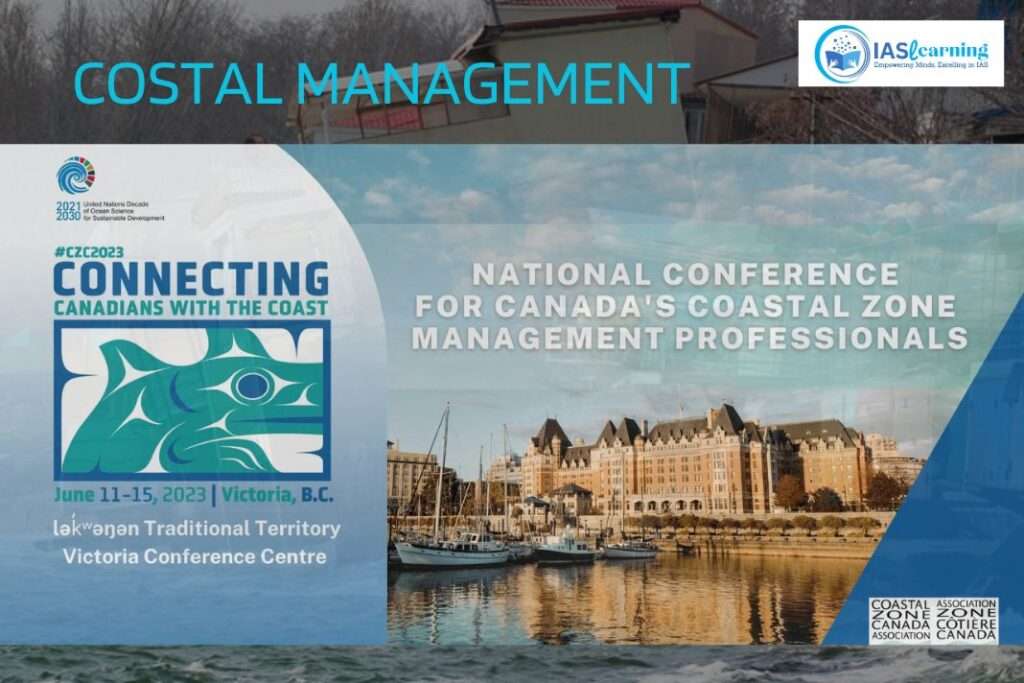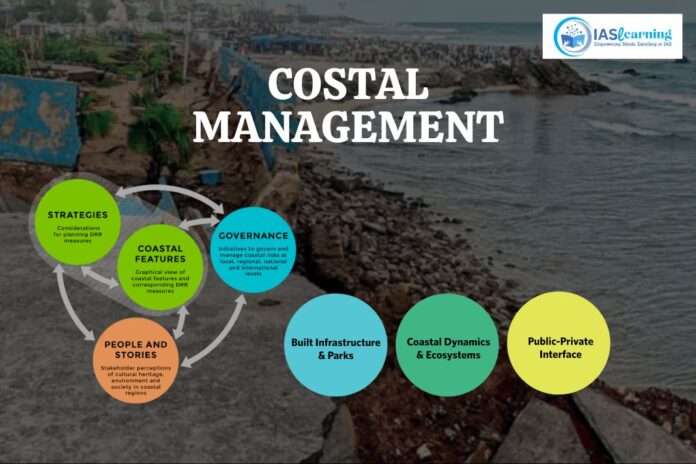Table of Contents
Introduction to Coastal Ecosystem
India’s vast coastline, spanning approximately 7,516.6 kilometers, is a treasure trove of ecological diversity, economic potential, and cultural heritage. These coastal areas hold immense significance for India, providing opportunities for trade, tourism, and fisheries, while also presenting challenges related to climate change, environmental degradation, and sustainable development. This essay explores the coastal areas of India, their importance, the challenges they face, and the strategies required to harness their potential while ensuring their long-term sustainability
Coastal areas, where the land meets the sea, are special places full of plants and animals. Coastal ecosystems stand as intricate and vital interfaces between terrestrial and marine realms. These captivating zones teem with diverse flora and fauna, providing essential habitats, resources and services that sustain both human societies and the natural world.
key points about India’s coastline:

- Geographical Diversity: India’s coastline is incredibly diverse, ranging from sandy beaches and mangrove forests to rocky shores and estuaries. This diversity supports a rich ecosystem with unique flora and fauna.
- Cultural Significance: Coastal regions have played a significant role in India’s history and culture. Many of India’s major cities, such as Mumbai, Chennai, and Kolkata, are located along the coastline. Coastal regions are often hubs of trade, commerce, and cultural exchange.
- Economic Importance: The Indian coastline is of immense economic importance. It facilitates trade and commerce, with several major ports like Mumbai, Chennai, and Kolkata serving as gateways for international trade. Fishing and aquaculture are also significant economic activities along the coast.
- Tourism: India’s coastline attracts tourists from around the world. Goa, Kerala, and Andaman and Nicobar Islands, in particular, are famous for their pristine beaches, water sports, and natural beauty.
- Maritime Security: Securing the maritime boundaries is a critical aspect of India’s national security. The Indian Navy plays a vital role in safeguarding India’s maritime interests and ensuring the security of sea routes.
- Islands: India’s coastline is dotted with islands, including the Andaman and Nicobar Islands in the Bay of Bengal and the Lakshadweep Islands in the Arabian Sea. These islands are strategically located and have unique cultural and ecological significance.
- Climate Vulnerability: Coastal areas are vulnerable to the impacts of climate change, including sea-level rise and extreme weather events. India’s coastline faces challenges related to coastal erosion, flooding, and the preservation of coastal ecosystems.
- Biodiversity Hotspots: The coastal and marine ecosystems along India’s coastline are biodiversity hotspots. They are home to a wide range of species, including marine mammals, coral reefs, and sea turtles.
- Blue Economy: India has been focusing on the blue economy, which includes sustainable marine resource utilization, aquaculture, and marine tourism, as a means to drive economic growth and development along the coastline.
- Infrastructure Development: India has been investing in the development of coastal infrastructure, including ports, harbors, and coastal highways, to enhance connectivity and facilitate trade and economic development.

Coastal Ecosystem: Background and Data
- India covers 2.4% of global landmass, inhabited by over a billion people.
- Indian subcontinent separates Arabian Sea and Bay of Bengal in northern Indian Ocean.
- Indian coastline spans 7,517 km: 5,423 km in peninsular India, 2,094 km in Andaman & Nicobar and Lakshadweep islands.
- Exclusive Economic Zone (EEZ) extends over 2.02 million sq. km.
- Coastal areas vital for diverse marine life, provide livelihoods to coastal communities.
- Human population thrives through coastal and marine resources, reflecting deep connection.
Importance of Coastal Management for India
- Resources: The immense mineral resources of the Indian Ocean include cobalt, zinc, manganese, and rare earth elements. These minerals are necessary to produce electronic products such as laptops, smart phones, and other automotive parts. Gypsum and common salt are two more salts found in seawater that are useful economically. The use of gypsum is widespread.
- Environmental Protection: Coastal management practises for habitat conservation include planting mangrove trees and creating shelter beds for them, restoring marine plants, and eco-restoring sacred forests, among other things. This is crucial for the safety of coastal towns and to assist stop flooding.
- Sustainable Development: Marine resources from the Indian Ocean can support India’s economic expansion in a sustainable manner. The blue economy has a lot of promise to accelerate economic growth through the responsible use of the waters.
- Effective Governance: Coastal management would help communities increase their collective capacity and would improve decentralised governance for embracing and putting integrated coastal management concepts into practise.
- Increased Tourism: Coastal management includes building tourist infrastructure, restoring and replenishing water bodies, developing beaches, and building other modest infrastructural facilities. This is crucial for promoting tourism in an eco-friendly manner.
- Employment Creation: It will give many people better work and living conditions. As a result, inclusive growth will benefit. For instance, increasing the use of fishing resources can help many people support themselves.
- Pisciculture: Marine fisheries wealth off the coast of India are thought to have a 4.4 million metric tonnes yearly harvestable potential. Therefore, coastal management would help the fishery sector by creating infrastructure.
- Energy Security: Petroleum and gas hydrates are the principal energy sources found in the Indian Ocean. Petroleum-based products mostly consist of oil generated in offshore areas. Tidal energy is also significant since it would give residents access to electricity.
- Logistics and Transportation Efficiency: Coasts are important commerce entry points. Greater regional connection will lower transportation costs greatly and lessen inefficient logistics.
Challenges in Coastal Ecosystem

Despite their economic and ecological significance, India’s coastal areas face a plethora of challenges:
- Climate Change: Rising sea levels, extreme weather events, and coastal erosion threaten the very existence of coastal communities and ecosystems. Climate change adaptation and mitigation are imperative.
- Environmental Degradation: Unplanned development, pollution, and overfishing are degrading coastal ecosystems, endangering marine life and the livelihoods of coastal communities.
- Loss of Biodiversity: Urbanization and industrialization often encroach on sensitive coastal habitats, leading to the loss of biodiversity and disruption of ecological balances.
- Natural Disasters: Coastal areas are highly vulnerable to natural disasters such as tsunamis and cyclones, necessitating robust disaster preparedness and management.
- Infrastructure Development: While infrastructure development is essential for economic growth, haphazard construction can exacerbate coastal erosion and disrupt ecosystems.
- Lack of Permanent Status for NCZMA: The absence of permanent notification for the National Coastal Zone Management Authority (NCZMA) results in reconstitution every few years, leading to instability and inconsistency.
- Ad-hoc Functioning of NCZMA: The absence of a defined membership structure for NCZMA has led to its ad-hoc functioning, potentially affecting effective decision-making.
- Expert Appraisal Committee Issues: Instances of Expert Appraisal Committees (EACs) missing from project deliberations raise concerns about the thorough evaluation of infrastructure projects’ environmental impact and feasibility.
- Incomplete EAC Participation: The presence of less than half the total strength of EAC members during deliberations undermines the comprehensive assessment of projects.
- Lack of State Coastal Zone Management Authorities (SCZMAs): In states, the absence of constituted SCZMAs raises questions about project approvals without necessary recommendations and proper assessment.
- Insufficient Project Recommendations: SCZMAs have recommended projects without mandatory documents, potentially overlooking critical environmental considerations.
- Project Approval Flaws: Projects being approved despite inadequacies in Environment Impact Assessment (EIA) reports, including outdated data, incomplete environmental impact evaluations, and failure to consider potential disasters.

Initiatives for Coastal Management
- Coastal Regulation Zone: The Coastal Regulation Zone (CRZ) notification was issued in 1991 under the Environmental Protection Act, 1986, by the Ministry of Environment, Forest and Climate Change to regulate activities in coastal areas of India.
- The government has issued notifications under the Environment Protection Act, 1986, to regulate activities along India’s coasts particularly regarding construction.
- The Coastal Regulation Zone Notification (CRZ) 2019, implemented by the Ministry, classifies the coastal area into different zones to manage infrastructure activities and regulate them.
About Coastal Regulation Zone Notification (CRZ) 2019:
- CRZ-1: These are ecologically sensitive areas; these are essential in maintaining the ecosystem of the coast. They lie between low and high tide lines. Exploration of natural gas and extraction of salt are permitted
- CRZ-2: These areas are urban areas located in the coastal areas. Under Coastal Regulation Zone (CRZ) Notification 2018, the floor space index norms have been unfrozen.
- CRZ-3: Rural and urban localities which fall outside the 1 and 2. Only certain activities related to agriculture and even some public facilities are allowed in this zone
- CRZ-4: This lies in the aquatic area up to territorial limits. Fishing and allied activities are permitted in this zone. No Solid waste should be let off in this zone. This zone has been changed from 1991 notification, which covered coastal stretches in islands of Andaman & Nicobar and Lakshadweep.
Coastal Ecosystem: Institutions responsible for the implementation of the CRZ are:
- National Coastal Zone Management Authority (NCZMA) at the Centre
- State/Union Territory Coastal Zone Management Authorities (SCZMAs/UTCZMAs) in every coastal State and Union Territory and
- District Level Committees (DLCs) in every district that has a coastal stretch and where the CRZ notification is applicable.
- These bodies examine if CRZ clearances granted by the government are as per procedure, if project developers once given the go-ahead are complying with conditions, and if the project development objectives under the Integrated Coastal Zone Management Programme (ICZMP) are successful.
- They also evaluate the measures taken up by the government towards achieving the targets under Sustainable Development Goals.
- National Centre for Sustainable Coastal Management: It aims topromote integrated and sustainable management of the coastal and marine areas in India for the benefit and wellbeing of the traditional coastal and island communities.
- Integrated Coastal Zone Management Plan: It is a process for the management of the coast using an integrated approach, regarding all aspects of the coastal zone, including geographical and political boundaries, to achieve sustainability.
Opportunities and Solutions
- Sustainable Tourism: Promoting sustainable tourism practices that respect the environment and local cultures can boost coastal economies while safeguarding natural resources.
- Blue Economy: Embracing the blue economy concept, India can focus on sustainable marine resource utilization, aquaculture, and marine tourism to drive economic growth.
- Conservation Efforts: Investing in the protection and restoration of coastal ecosystems, such as mangrove conservation and coral reef restoration, is vital.
- Climate Resilience: Building climate-resilient infrastructure, implementing coastal zone management plans, and raising awareness about climate change adaptation are crucial steps.
- Community Involvement: Engaging coastal communities in decision-making processes and providing alternative livelihood options can reduce pressure on natural resources.
- Marine Research: Encouraging scientific research on marine biodiversity and ecosystems can inform policies and conservation efforts.
- Enhanced Monitoring and Compliance: Strengthen monitoring systems using technology for real-time oversight of coastal activities.
- Ensure strict enforcement of CRZ regulations to prevent unauthorized development.
- Community Engagement and Capacity Building: Educate local communities and stakeholders about CRZ guidelines and their importance.
- Empower local authorities through training and capacity-building initiatives for effective implementation.
- Eco-friendly Development and Restoration: Encourage sustainable and eco-friendly infrastructure projects within designated CRZ zones.
- Prioritize restoration efforts to rehabilitate and conserve degraded coastal ecosystems.
- Adaptive Management and Review: Implement adaptive management strategies that allow flexibility in response to changing environmental conditions.
- Regularly review and update CRZ guidelines based on scientific insights and evolving coastal challenges.




